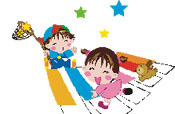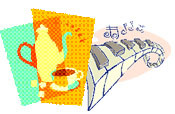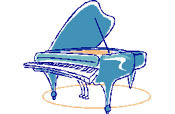柯大宜電子報 第36期

親愛的夥伴們大家好!
台灣柯大宜音樂教育學會從創立至今已有二十年了,在這些日子裡,大家不辭辛勞,為學會付出貢獻許多,也學習成長許多,不為什麼,就是為了喜歡音樂,熱愛音樂,希望發展美好的音樂教育使台灣更好!
如此這般的熱情執著,令姿姍我非常感動!尤其過去歷屆的理事長與理監事們和秘書長,出錢出力奉獻一切,更令人敬佩,也是姿姍學習的榜樣!
這麼好的專業的學術團體,姿姍對於接任理事長感到無比的光榮,更覺得是重擔責任的開始!我將全力以赴,使學會更上一層樓,會員拓展將是一大目標,增加會員福利,增加音樂學術活動,將已停刊多年的"樂傳"雜誌復刊,關懷弱勢.....等等,是近期努力的目標。
無欲則剛,海納百川,我將真誠奉獻,期待在大家的一起努力下,共同創造學會和台灣更美好的未來!
祝福大家!
理事長 李姿姍

豆芽菜園隨筆
盼回如如本相
◎豆芽菜農
這個冬天已進入臘月末了,厚外套都未上場,頂多套著往年的春衣秋衫就夠,偶而一幌神會有季節錯置之感,哎!這樣無味的冬季,說是大自然向人類踐踏地球的反撲,我到覺得是上帝慈愛的警訊,祂是不是和我一樣?盼著寶島的冬天,回復二、三十年前那樣態,冷得令被窩與陽光顯得可愛;厚重的冬衣有用武之地,襯托出春夏脫去寒服的輕盈欣快感。
雖是異常的暖冬,太陽起落的時間規律倒是依舊。黃昏後天已黑,收拾書桌,準備關上電腦時,在FB上突然看到一則活動訊息,是H君的宣傳知片,為他自己的個人音樂會所製作的一分鐘俏皮影片,告知親朋好友們當天晚上七時的演奏會地點與內容。
反覆播放著那則宣傳短片,我腦海中浮現的是一個木訥的六歲幼兒,不太給人笑容,還好不拒絕我的摟抱。然而,一彈琴時那木訥變成一種小朋友身上少見的專注。他鋼琴學習的進展相當令我刮目,也少有因學校考試而請假的記錄;更少見一般小朋友令人傷腦筋的「不練琴」問題。就這樣,小學六年級畢業前夕就為他辦了一場一個半小時的個人演奏會,一場下來,雖不是十全十美,倒也有板有眼。本以為這場畢業音樂會是他進入國中前告別鋼琴學習的句點。沒想到他一直到高中二年級才完全停下學琴的腳步。最後一次分享會中,他是一位木訥嚴肅的青少年。
後來聽說,他考上前端國立大學的電機系,這一點也不令我意外,因為小時候在學琴的日子裡,他來上課,等候時父母總是給他功文數學練習題猛做,小學時,已能計算國、高中的題目,看來父母對他將來的期許是數理領域。記得當時我為此鼓勵自己兒子也去這個補習班,只可惜兒子只有五分鐘熱度,令我有點悠悠的遺憾。以H君小時數理的表現,大學考入電機系,當時沒什麼奇怪,怪的是幾年後,我又聽說他因成績不佳被學校二一退學,他就先去當兵,之後成功插班回原系,沒想到第二次又被退學,所以正處在生涯茫惶的日子裡。當下讓我聽了很不捨,希望他可以再來學習鋼琴,為自己重拾一些生命力,可惜我沒盼到他。
又過了些日子,我被邀到某學院音樂系兼一門課,竟看到他坐在教室中,但已是一位俊挺的年輕人了,那副木訥模樣依舊,但神情中多了些什麼……「篤定」?……不,應該說是「陽光」。課中他與同學們跟著我又唱,又玩遊戲,理論面也特別能分享具深度的見識與見解。彷彿告訴我,音樂才是他有衝力的生命跑道。從那日開始,我形容他,不再用「木訥」。
由於只兼一門課,所以與陽光的H君互動的日子只一學期,之後又沒積極互動。沒想到這日見到的是穿著西裝,打著領結,帶著微笑、站在琴旁、彬彬行禮的演奏者。記得小學六年級在他個人的演奏會中,也是這般打扮,只是穿的是小朋友的西裝短褲……。時光如梭,這一幌眼,近十五年過去,他站在琴前,一鞠躬,嘴角是一抹陽光,隨後,琴聲盪起……專注而篤定,莊嚴而深沈。一股欣慰滲透了我的心田。
是否大人們總是洋裝做為孩子開發潛力,領著孩子背著原來的性向猛衝猛跑,期許孩子滿足大人的期待呢?
我認識這位翩翩男子已有二十多年了,教著他玩音樂、識譜,克服彈琴難處;也見著他猛寫功文數學從加、減到代數。但只有在操弄鍵盤,揚起的樂音中,我才覺得見到真正的他。不知是否他也在手指彈躍時,回返自我的如如本相,與自己和聽閱者對起話來?!
走出演奏廳,校園被佈置得光光燦燦的,迎著聖誕的來臨,聖誕樹下的雪人圍了一條紅圍巾,我才猛然想起,這個冬天我的圍巾還沒從衣櫃中拿出了呢!!這晚我後悔沒帶著一條厚暖圍巾備用,因為園中竟起了些寒風,令我想再多晃走些時間,享受這冬夜原來應有的凍寒之韻。

教學分享
擊樂聲情逍遙遊
節奏音景即興創作之單元設計
◎王維君/國立台灣科技大學人文社會學科副教授兼主任
一、 作業設計理念
「節奏音景即興創作」是「音樂密碼感知與創造」這一門通識課程的期中作業設計。受到當代美國音樂教育學者David Elloit音樂教育實踐哲學“Musicing”之啟發,本「音樂密碼感知與創造」課程之核心精神,希望學生能夠透過課程中的引導達到「Musicing」之音樂素養。「Musicing」為動詞,music listening + music making,強調主動的音樂聆聽與音樂創作,意即學生能夠在音樂的聆賞、感受與創作中,透過五感的探索和嘗試體驗音樂之美;將理性的知識轉化為個人內在的認知概念。美國音樂教育學會(MENC,1973)也指出,應讓學生透過音樂的聆聽、分析與評鑑、演奏和創作的過程,來體驗音樂中的音樂元素,進而強化音樂的學習。因此,本課程透過課堂活動之設計,引導學生經由主動的參與、個別的發現與立即的運用音樂概念、技能與知識後,獲得對音樂的理解;更期能激發學生的創造力,引發即興的學習氛圍,並享受音樂創造過程所帶來的樂趣。
二十世紀後半期,強調人文關懷及探討人類與環境互動之環境意識興起,音景議題亦有重大研究發展。基於通識精神中的人文關懷與世界觀,故將音景單元納入「音樂密碼感知與創造」通識課程中。「節奏音景即興創作」即是「音景」單元四大主題之一。音景單元仍依循課程核心精神,強調音樂教育中學生的主動參與行動的重要性,並以認知運行構成音樂體驗的基礎而設計,其四大主題為「詩中之聲情」、「音景觀察與採集」、「節奏音景即興創作遊戲」及「音景故事創作」,搭配深入淺出的課堂講授及創意小組活動循序進行。「詩中之聲情」連結中國古典詩詞與文化,領略古詩詞的意境與文字之美;藉由詩詞中文字的描述,強化對聲音的認知,並藉此定義音景,並探索音景中的自然音與人文社會之文化音。「音景觀察與採集」中田野調查與紀錄,幫助學生發掘學校所在之社區或城市的音樂文化內涵及音景特色,並激發對環境保護與文化承傳的使命。「節奏音景即興創作遊戲」組織身邊俯拾可得的音色素材之集體創作,學生將所理解與認知之音樂構成元素與理論,轉化成即興創作;演奏節奏音響作品的同時,亦結合肢體的律動與視覺的傳達,以引發對音樂及五感之探索與嘗試,增進對自我肢體與感官的認知與體驗。而最後「音景故事創作」統整前三項成果,將自己採集的聲音元件,結合音樂藝術之表達與科技媒體之運用,構思並創作屬於自己的生命故事。
二、 「節奏音景即興創作遊戲」作業執行流程與實例
(一) 作業執行流程
「節奏音景即興創作遊戲」小組成員在教師及助教引導下,蒐集特定音色類-包括金屬、木質、紙、或人身節奏(Body Percussion)等,加上簡單打擊樂器或自製樂器,進行節奏練習與即興創作,然後輪流發表呈現。
進行「節奏音景即興創作遊戲」之前的先備知識與能力包括: (1)必先由先前幾單元教師的講述課程中奠定對各項音樂構成要素之認知與理解;(2)而田野聲音採集之訓練,提升學生對聲音的敏銳度及對音色素材的掌握度;(3)節奏模仿(譜例1)、節奏問答(譜例2)、頑固音型之節奏伴奏(譜例3)等節奏練習,強化學生的節奏組織與演奏能力;(4)教師以鼓圈(Drum Circle)形式帶領學生以手鼓、康加鼓、沙鈴等打擊樂器作即興演奏,開展團體的共同創作,學習聆聽與表達,不僅喚起個人內在的創造力,更以音樂搭起與他人心靈溝通之橋樑。進行方式可先以兩兩樂器的問候、對話與情感交流,然後擴大至整個鼓圈的節奏接龍,最後再鼓勵即興的發揮,點燃煙火。
「節奏音景即興創作」之流程步驟如下:
(1) 決定音色素材: 先對學生進行分組(每組5或6人組成),再由小組討論決定創作音色(金屬、木質、紙或人體節奏樂(Body Percussion)四選一)。
(2) 蒐集特定類別音色的素材: 由課堂上或身邊蒐集小組決定的多種特定類別音色(金屬、木質、紙或人體節奏樂四選一)之素材。教師可提示但切記要有所保留,讓學生發揮創意。金屬類除鈸、三角鐵等樂器外,還可用鑰匙、銅版、茶壺、奶粉罐等金屬製品;木質類除木魚、刮弧等樂器外,還有木板凳、黑板、甚至高跟鞋的鞋跟;紙張的質地與厚度可做變化外,還可利用撕、搓、揉、彈指、翻書、捲起來當鼓棒敲等方式進行;而人體節奏樂則包括拍手、拍胸、拍腿、輕拍臉頰、彈指、踏腳、碰撞、摩擦、人聲口技等。然後決定音源的發聲方式及分辨其音高之高低、音量之強弱、及時值之長短等特性,記錄於「音源材料記錄表」(附錄一)中。
(3)決定各音樂構成要素: 透過「音樂構成要素表」(附錄二)在ABA三段式的結構下,設定AB段兩種對比或差異的各音樂構成要素如節拍、速度、音量等。
(4) 進行節奏創作: 依照小組「音樂構成要素表」設計節奏型式,考慮所用素材之音量、音高等特性進行分類,先設定頑固節奏型為基礎,再循序加入新素材並以層疊方式表達各節奏型。教師及助教引導學生以記譜法或圖示法將所設計的節奏型記錄下來,一方面是以視覺的輔助檢視其節奏創作的層次及對比表現;另一方面是強化樂理之節奏認知與讀譜記譜能力。
(5) 反覆練習並加肢體動作及隊形設計。
(6) 老師說明評分原則: (1) 符合音樂素材表格之設定;(2)節奏表現層次;(3)對比性;(4) 音色的豐富性與創意性;(5)流暢度。
(7) Show time: 各小組輪流發表即興節奏之創作作品。
(8) 請各組學生於演出後,輪流發表演出心得及分享聆賞感受。前者如:(1)是否滿意自己的表現?(2)最後的展演是否將所有的設計呈現得淋漓盡致? (3)若有不盡理想之處,該如何改進?後者如(1)欣賞完各組精彩的「節奏樂即興創作」之後,包括自己的組別,選出最喜歡的一組表演;(2)並說明他們在音色、節拍、速度、音量和音高的創作手法中,最特別或最令人驚艷之處。
(二)個案實例說明
如果以A組同學所會具體經歷的過程為例,具體的情境與過程如下:
(1)首先全組同學透過小組討論後共同決定音色材料為金屬。
(2)然後分頭蒐集課堂上或身邊所易找到的金屬材質的物件,越多越好。除了老師提供的鈴鼓、碰鈴等樂器外,還蒐集到鋼鍋蓋、銅板、鑰匙、湯匙、叉子、奶粉罐、鋼杯、機車鎖等。
(3)再將每一個音源的發聲方式及分辨其音高之高低、音量之強弱、及時值之長短等特性,分類並記錄於「音源材料記錄表」中(附錄三)。
(4)在ABA三段式的結構下,設定AB段兩種對比或差異的各音樂構成要素(附錄四)。
(5) 根據小組設定的「音樂要素表」,考慮所用素材之音量、音高等特性來設計節奏型式。先設定頑固節奏型為基礎,再循序加入新素材並以層疊方式表達各節奏型。
(6)以記譜法或圖示法將所設計的節奏型記錄下來。
(7)全組排練,適時加入肢體動作及隊形的設計。
(8)展演並接受掌聲。
(9)作品發表後,現場開放討論,各組就以下問題互評:(a)首先是否符合音樂素材表格之設定? (b) 其節奏表現層次、對比性、音色的豐富性與創意性如何? (c)在音色、節拍、速度、音量和音高的創作手法中,最特別或最令人驚艷之處為何?。
(10)同儕互評後,再分享自己在構思或表演過程中最具挑戰性之處、最困難之處、最有成就感之處、最大突破之處,以及運用上本學期課堂上所教授的哪些音樂概念、知識、技巧等? 該組同學提出:「由於金屬材料發出的聲響比較接近,起初很難奏出好聽的聲音,經過多番的嘗試、溝通及練習,到最後竟然可以合奏出有節奏感,又有抑揚頓挫的曲子,也體會到團隊合作的價值。」「從來沒有玩過這樣的形式表演,從頭到尾之設計和執行都經由團隊自行動手,居然在有限的時間內可以編出一段即興的音樂,很有成就感。」
三、困難與解決之道
這一作業曾在一般大學及技職院校實施過,在教師與助教的引導下,皆可以順利完成,且同學們的創意令人驚艷。但基於授課對象之不同,與情境受限,可能會遭遇以下之困難,其解決之建議如下:
(一)學生音樂能力及音感之落差:學生由於成長背景、興趣及音樂天賦的不同,影響其音樂演奏及創作的動機與能力。來自不同科系的通識課程學生之音樂能力及音感有些落差,難能以一樣的基準要求。所幸小組成員可互補有無,音樂能力強者可以領導者的身分帶領其他同學一同創作,並可負責較複雜的節奏;而對節奏的感知與記憶較弱,難能以即興接龍發展作品的織度結構,但可鼓勵學生每人以頑固節奏型各司其職,層疊進行,結合眾人的力量,也可以有精彩的表現。
(二)組織音源受限:礙於環境之限制,可能課堂上或身邊沒有足夠的音源。但可鼓勵學生以人身節奏(Body Purcussion)及人聲節奏(Vocal Percussion)作為材料;准許少量加入其他種類材質,以求異質性;並鼓勵學生思考即使是同一物件,但由於敲擊位置及發聲方式之不同,也能有多樣的表現。
(三) 缺乏助教等人力:小組分組活動,無論是採集、分析、組織音源,甚至節奏發聲演奏等,皆需教師與助教的音樂專業在旁協助與指導。在人力不足的情況下,只能壓縮時間分配給每組,並提供表單作維思考流程的依據或播放學長姐的實例給予觀摩參考,但是不要太多,以免落入模仿的窠臼,而缺乏創意的思考。
(四) 先備的節奏組織與演奏能力是必須的,若未有先前的節奏模仿、節奏問答、頑固音型之節奏伴奏等訓練或鼓圈的經驗,而貿然直接進行此節奏即興創作,學生則容易遭遇較強的挫折感,而不願再嘗試音樂演奏與創作,反而違背音樂教育的初衷。
(五) 視譜記譜能力弱:學生若不會記譜,較難能清楚記錄設計之層次表現。教師與助教需較為費心引導以圖示法或簡易記譜法來記錄節奏設計及的過程與結果。
(六) 小組成員動力不足:小組成員不夠熟識或生性靦腆,較不易動起來。老師及助教觀察到此現象,需涉入引導,逐漸點燃團體的分工、協調的合作機制。
(七) 在有限的時間內,作效率練習。
四、結語:成果與運用
學生於單元結束後之回饋如下:
(1) 從來沒有體驗過自行創作的感覺,很新鮮。
(2) 為了節奏樂即興創作想了很多點子,最後激發最有創意的方式表達。
(3) 組員們各自發揮自己手上樂器的特色,創造不同卻又富連結性的節奏,很好玩。
(4) 在適當的時間加入自己的節奏很困難, 但是過程中與不同科系同學相聚練習卻很有趣。
(5) 自創節奏是很大的考驗,對於自己可以發揮的肢體音響感到很神奇且有趣。
本課程強調探索與經驗,為過程導向、學生導向及學習情境導向之音樂學習及審美體驗。而這項作業中的教與學,不只在經歷一場創造過程,亦是一連串問題的發現和解決。學生以小組之合作形式進行本活動「節奏音景即興創作」,雖然以節奏創作為主體,但須考量其他音樂構成要素,且搭配肢體動作與隊型設計,為刺激多元感官的學習歷程。評量所達到之學習能力指標包括: (1)能強化節奏相關樂理的認知,並精進實際演奏的技巧。(2)能透過節奏樂即興創作,啟發與提昇創造力。(3) 能引發對音樂及五感的探索與嘗試,增進對自我肢體與感官的認知。(4) 能在即興的氛圍中,享受創作樂趣,並由音樂活動的參與及創作滿足自我實現。(5) 從小組討論與創作中,增進思辨、整合、表達能力,及與他人協調合作能力。 最終期待學生能對音樂學習產生樂趣,並將音樂視為啟發創造力、抒發壓力、自我實現、甚至與他人心靈溝通的終身伴侶。
在學習音樂的過程中,即興音樂創作應是最能讓學生表現自我的方式之一,教師應多鼓勵學生嘗試即興創作。對於沒有受過專業訓練的學生,可以先從節奏創作著手,然後再循序加上旋律甚至和聲之變化。節奏即興可參考本篇之教學設計實施,而曲調的即興創作練習,可先擷取一小段熟悉的曲調,改變部分的節奏或節拍,或嘗試曲調接龍。而五聲音階,避掉半音及增音程,是最安全的素材,不必擔心製造不和諧音,且富中國風。至於能夠掌握調性的同學,也可改變三音及六音玩大小調的色彩變化。古典音樂家的主題及變奏曲為最佳學習的典範,分析其中的變化,即可累積音樂養分。另外,平時多聆聽各種風格的音樂,創作上也請勿自我設限,任何的音樂素材或風格都可使用,盡情開發無限的潛能。

學術專文
Kodaly Inspired Music Education: Current Issues in Taiwan
◎陳曉嫻 Jessie (Hsiao-Shien) Chen/國立臺中教育大學 National Taichung University of Education
Abstract
Education reform has been enforced for more than 20 years in Taiwan. Scholars, professors, and teachers from each level are now re-compositing national curriculum guidelines because of nine-year compulsive education advances to twelve-year basic education in Taiwan. Along with the globalization, Taiwan catches up the trend in education with differentiated instruction, effective teaching, Flipped Classroom as well as MOOCs. Being in the fast changing educational environment, music educators need to improve music teaching but in the way with music nature. A famous Kodaly quote says, “Music should belong to everyone.” According to Kodaly’s philosophy, everyone is able and has rights to learn music. In other words, music educators’ social responsibility means to teach all children music.
Music takes a role in public education makes all children musical literate possible. Children go to public schools with different prepared levels, and Kodaly educators apply differentiated instruction to meet their various needs. Teachers differentiate content, process, and product according to students’ readiness, interests, and learning profile to increase their growth, motivation, and efficiency. Kodaly educators are referred as music teachers who adopt Kodaly method or concept in their classrooms. A step further, Kodaly educators can be those who are inspired by Kodaly and have a vision to teach students music literacy. Through learning to read and write, learning autonomy is a hidden purpose that Kodaly educators urge students to achieve, thus being active learners that students can obtain life-long enjoyment from music. A Kodaly inspired music education does not expect students to major in music but enjoy music as well as enjoy life.
Keywords: Current issues, Differentiated instruction, Kodaly
Background of the Study
Ministry of Education in Taiwan launched education reform in 1990s and continued to modify the directions by promoting policies and strategies. Education policies lead the directions that we cannot comment whether better or worse. Education always needs time to see the results and gain proofs. An old Chinese saying goes “it takes ten years to grow tress but a hundred years to rear people,” in other words, it means we take a lifetime to educate a person than growing a tree. The wisdom of Chinese ancestors points out that how education influences all and become an important asset of a country. Nine-year Compulsive Education has advanced to Twelve-year Basic Education since 2014, although Ministry of Education is still compiling the National Curriculum Guidelines yet complete. While scholars, professors, and in-service teachers work on curriculum guidelines, Ministry of Education promotes several ideas to go along with the Basic Education, such as MOOCs, Flipped Classroom, differentiated teaching, and effective teaching. In the ecosystem of education, music teachers play important roles to help every child achieve.
Philosophy of Kodaly and Current Issues in Taiwan
Kodaly was not only a music educator but also composer and ethnomusicologist. He believed in the power of music and stressed the importance and value of music. He and his associates studied and adapted techniques, and then developed sequential steps as an approach to help learners to foster musicianship and music literacy. Kodaly method, along with the learning theories of Henrich Pestalozzi, John Dewey, and Jerome Bruner, provided sequential teaching steps for music teachers to build up strong foundations for children. In addition to forementioned statements, Kodaly philosophy also inspired music teachers to develop their own sense of “taste” and philosophy of music education.
Among recent promoted issues in Taiwan, many of them are either based on Kodaly philosophy or able to be accomplished through Kodaly approach. As National Curriculum Guidelines in Taiwan, goals and objectives focus on various abilities in subject matter. Curriculum Guidelines of music in Arts and Humanities state that music learning contents include music knowledge, sense of music, notations, singing, instruments playing, music creativity and appreciation. Curriculum Guidelines address that teaching goals need to incoperate “art cognition, motor skills, affections, and social responsibility,” but teachers rank priorities to train students’ knowledge and skills over affections and social responsibility. Regardless of National Curriculum Guidelines, if teachers want students to have lifelong interests in music, affections and social responsibilty must be core variables to make the expectations happen. As Kodaly stated,
The laws of morals and the laws of music are the same.
Music education of children rests in the hands of their instructors.
To develop to the fullest extent possible the innate musicality present in all children.
Teachers, educators, or instructors all mean the same thing: a special occupation, which is not only a career but also a vocation. As Figure 1 addressed what a teacher defined oneself,
I refer to my past and present students as “My kids.”
I am not in it for the income. I am in it for the outcome.
It’s who I am. It’s my passion, my calling, and my world.
According to National Curriculum Guidelines, scholars assert that “learning arts” is equally important to “fostering humanities,” but music teachers are busy in training children memorizing music theories and playing recorders so that involuntarily forget the ultimate goal as music literacy and lifelong interests. Kodaly defined music literacy as “the ability to read and write musical notation and to read notation at sight without the aid of an instrument,” furthermore, music literacy also meant “a person’s knowledge of and appreciation for a wide range of musical examples and styles” (International Kodaly Society, 2015). In addition to the version of Kodaly’s music literacy, literacy is given a broader definition as “lifelong learning, applying knowledge and ability to participate civil society” (Ministry of Education, 2014). As mentioned above, teachers need to help students acquire music literacy, and it is teachers’ social responsibility. Once teachers accomplish the social responsibility, students should obtain music literacy and utilize their music abilities to serve the society as accomplishing their social responsibility.
Music teachers have many hats. Music teachers are musicians, entertainers, therapists, nurses, travel agents, leaders, publicists, designers, librarians, agents, cheer leaders, and so on. As musicians, the core social responsibilities are a) presenting classic music, b) promoting domestic music, and c) popularizing and promoting art music (Dai, 2009/6/25). The item C “popularizing and promoting art music” is so-called music education.
Kodaly Inspired Education
Education has three facets, teacher, student, and materials. An experienced teacher once mentioned, “My best teaching happens when I forget to teach curriculum and remember to teach children.” Students come from various home environments, cultural backgrounds and having diverse interests, learning styles, and intelligences. They bring their own stories to the same school and face the same teacher. Aren’t teachers responsible to fulfill children’s individual needs? As Nicholas A. Ferroni said, “Students who are loved at home, come to school to learn, and students who aren’t, come to school to be loved.” Children are the future, and Kodaly reminded us how to treat them well in music.
I would advise my young colleagues, the composers of symphonies, to drop in
sometimes at the kindergarten, too. It is there that it is decided whether
there will be anybody to understand their works in twenty years’ time.
Let us take our children seriously! Everything else follows from this…only the
best is good enough for a child.
To develop to the fullest extent possible the innate musicality present in all children.
Children should be in the center of learning. Schools provide facilities for children to learn, and teachers are helpers to make the learning happen. Every child is unique, thus teachers must differentiate teaching in order to meet their needs. We know that is the right way to do, because that’s teachers’ social responsibility. Differentiated teaching is based on brain research, learning styles, multiple intelligences, and authentic assessment (Wu, 2012/4/5). Teachers can differentiate content, process, and product in teaching according to individual differences in readiness, interests, and learning profiles, therefore students are able to increase their growth, motivation, and efficiency. Regarding content of music teaching, Kodaly asserted,
The folk music of a child’s cultural heritage (the musical mother tongue) is the best material to teach the skills and concepts necessary to musical literacy.
Only music of the highest artistic quality is to be used in the education of children.
“Music of the highest artistic quality” means “authentic” folk music and “good quality” composed music (Choksy, 1999). Folk music provides forms for beginning musical learning such as pentatonic style, simple structure and language, furthermore it leads to an understanding of and appreciation for music of all styles, genres, and cultures. Classical repertoire is built on students’ singing experiences. First introduced were major composers of Baroque, Classical, and Romantic periods, and then Twentieth-century compositions can be brought in for secondary school students.
According to Kodaly, the way to differentiate “process” is teaching method in addition to the best materials for children. Kodaly and his colleagues established principles for music teaching and later became “Kodaly Method.” He not only inspired a revolution in Hungary but also popularized to the world for music education. Kodaly suggested,
We should read music in the same way that an educated adult will read a book:
in silence, but imagining the sound.
To be internalized, musical learning must begin with the child’s own natural
instrument- the voice
To teach a child an instrument without first giving him preparatory training and
without developing singing, reading and dictating to the highest level along
with the playing is to build upon sand.
Singing connected with movements and action is a much more ancient, and, at
the same time, more complex phenomenon than is a simple song.
It is not worth singing for ourselves; it is nicer if two people sing together. Then
more people: hundreds, thousands, until the huge harmony can be heard, in
which we can all be just one, indeed. Then will we be able to say: “May the world be happy.”
Kodaly method/approach guides children to sing in tune, to improvise, to sight-sing music through singing games from their own culture. Furthermore, children’s abilities of reading and understanding music are established and become musically independent. Research studies prove that “Kodaly method improves intonation, rhythm skills, music literacy, and the ability to sing in increasingly complex parts (DeVries, 2001, p. 24). For non-music effect, it shows to improve students’ academic performance such as reading and math as well as perceptual functioning, concept formation, motor skills, and so on.
Beyond differentiated teaching, music teachers have greater expectations in music education. There is one saying on the web that moves many music teachers,
...not because I expect you to major in music,
not because I expect you to play or sing all your life,
not so you can relax,
not so you can have fun,
but so you will be human,
so you will recognize beauty,
so you will be closer to an infinite beyond this world,
so you will have something to cling to,
so you will have more love, more compassion,
more gentleness, more good.
(Midnight Music, 2013/10/14)
School of Music at Kent State University, USA, creates an infographic to show that not only does music have educational merit, it can also be used to close the educational gap amongst students and schools (Infographic: http://musicedmasters.kent.edu/using-music-to-close-the-education-gap/). Although the data are American schools, situations of education gap and lack of music in schools are basically the same in Taiwan and somewhere else. In addition, benefits of music for children and how music can close the education gap are the truths that all the governments must learn. As Kodaly asserted,
Music is a prime necessity of life.
Real art is one of the most powerful forces in the rise of mankind, and be who renders it accessible to as many people as possible is a benefactor of humanity.
Music instruction must be a part of general education for everyone.
In Hungary, elementary schools offer music courses everyday as core curriculum as mathematics and language art. It is not a dream but a goal of Kodaly educators all over the world: Provide the best music education to children.
References
Choksy, L. (1999). The Kodaly method I: Comprehensive music education (3rd Ed.).
Englewood Cliff, NJ: Pearson.
Dai, D. C. (2009/6/25). Macao Orchestra: Social responsibility and mainstream
musical culture benchmark. Macao Daily, E3.
DeVries, P. (2001). Reevaluating common Kodaly practices. Music Educators
Journal, 88 (3), p. 24-27.
International Kodaly Society. (2015). Music literacy. 2015/8/31 Retrieved from: http://www.iks.hu/index.php/zoltan-kodalys-life-and-work/education/musical-literacy
Midnight Music. (2013/10/14). Quoteable quote Monday-Why I teach music.
Retrieved from:
http://www.midnightmusic.com.au/2013/10/quoteable-quote-monday-why-i-teach-music/
Ministry of Education. (2014/10). Plan 3-6: Higher citizens’ literacy. Retrieved from: http://12basic.edu.tw/Detail.php?LevelNo=206
Wu, C. S. (2012/4/5). Differentiated teaching and students learning. National
Academy for Educational Research e-Newsletter, 38. Retrieved from: http://epaper.naer.edu.tw/index.php?edm_no=38&content_no=1011



